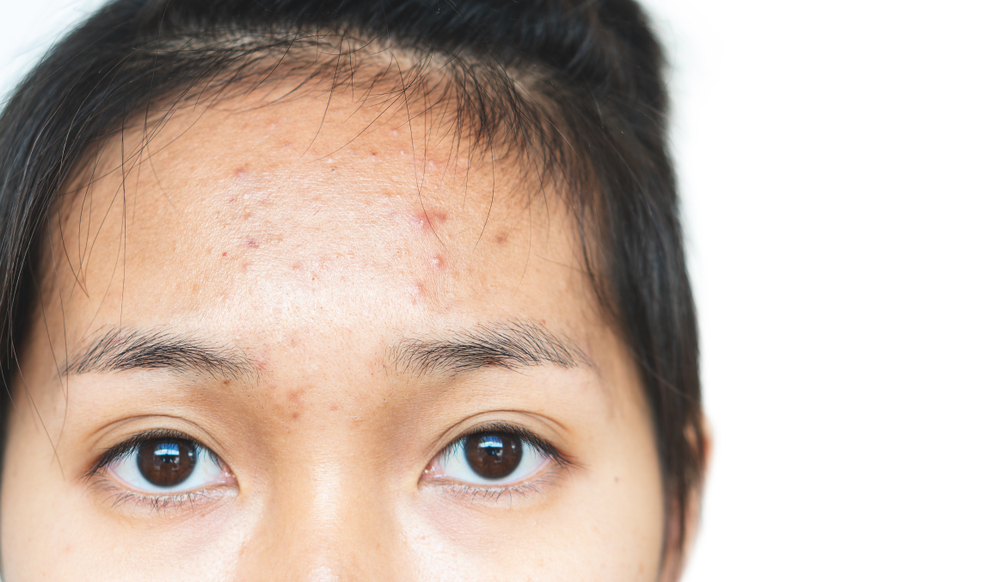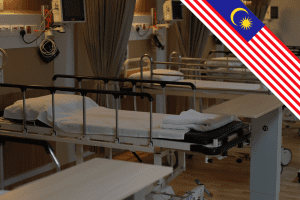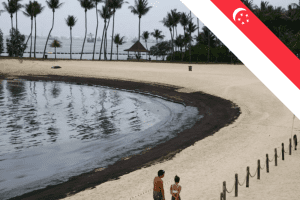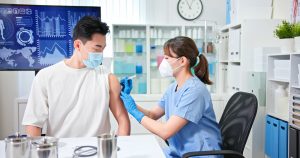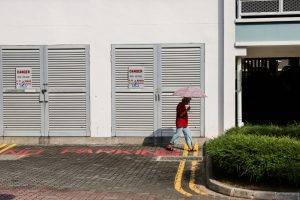Acne is a problem that not only bothers adolescents. In fact, anyone, at any age, is susceptible to it and it all boils down to how one manages the condition and prevents outbreaks.
First, What is acne?
Acne is a skin condition that varies in presentation, from minor skin involvement to significant disfigurement. It happens when special tiny units of your skin which comprise the hair follicle and sebaceous gland, are clogged with oil, dirt, bacteria and dead skin cells, causing pimples. And it’s when these pimples occur repeatedly, or spread and become more severe, that’s when you have acne. The areas more typically affected are the face, shoulders, back, neck, chest and upper arms.
What are the main causes of acne?
When it comes to the causes of acne, excess oil, clogged or infected pores are the main culprits. However, there are also other triggers that increase the chances of having acne.
- Fluctuating or excessive hormones
- Contact irritation
- Bacteria
- Emotional stress
Acne Types
Breakouts! Pimples! Red bumps! You must have heard even more ways to describe acne than these. But, it’s wrong to consider these terms an accurate description of acne.
When you know what kind of acne you have, then finding an effective treatment might be easier. There are basically two broad groups of acne:
Non-inflammatory Acne
Acne of this type do not typically cause pain, swelling and redness. They are also known as:
- White heads (closed comedones): These occur when excessive sebum and dead skin cells accumulate, and the follicle becomes completely blocked, creating a bump or lesion, also known as a comedone. This lesion, sealed by the skin surface, results in a closed comedone with a white appearance.
- Blackheads (open comedones): When the closed comedone pushes beyond the skin surface, densely packed dead skin cells, oxidised fats produced by the sebaceous gland and deposition of melanin, contributes to the dark appearance of this comedone.
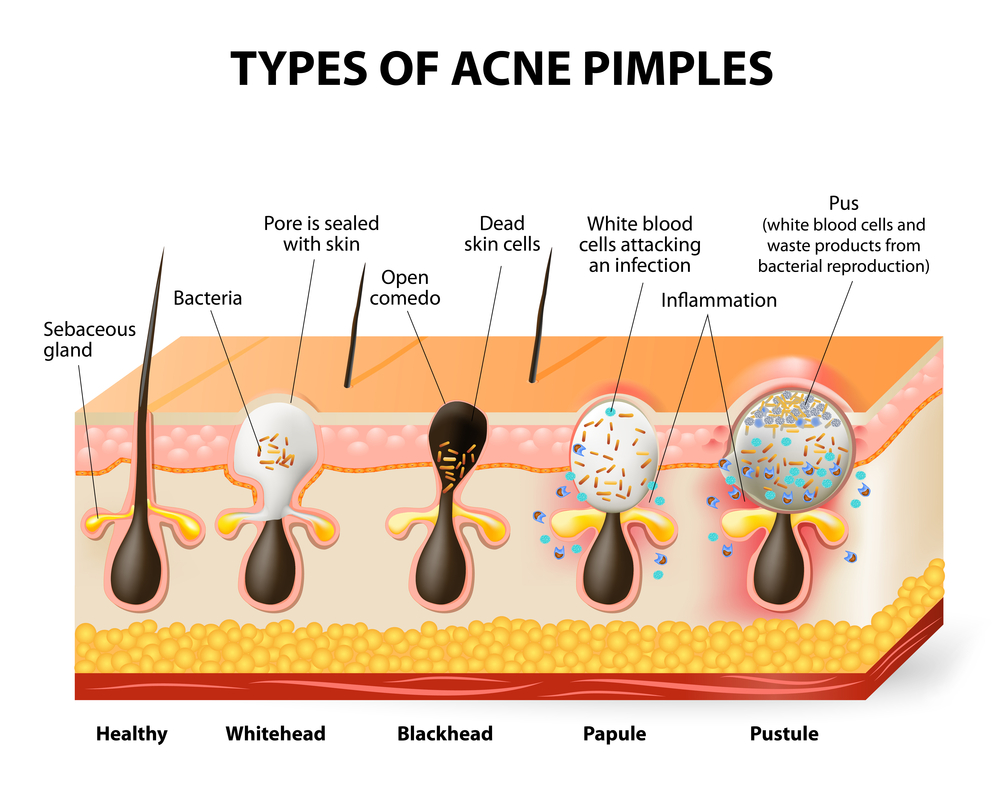
Inflammatory Acne:
This type of acne causes mild or severe pain, with redness or swelling. It is usually the result of an inflammatory response from the body fighting the bacteria in the skin.
- Papules: When there are pinkish, raised bumps on the skin.
- Pustule: When the same raised bumps appear to have a white or yellowish tip which point to the accumulation of pus.
- Nodules: Nodules occur when filled, swollen pores tolerate further irritation and enlarge. This kind of acne can go quite deep into the skin and may leave scars if improperly managed.
- Cysts: The most severe form of acne is called cystic acne. They refer to a collection of nodules that go deep into the skin, which look like boils on the skin surface.
Managing Acne
The treatment for acne completely depends on its types and condition. Non-inflammatory acne is the mildest form of acne and they can be treated with “over the counter” topical medications. Experts suggest salicylic acid or benzoyl-peroxide based treatments for mild acne and sometimes topical retinoids – a form of Vitamin A.
But, if you do not see a difference, or have inflammatory acne, then it would be best to consult a dermatologist or skin doctor, for a more personalised, and supervised approach. What we can advise, will then be tips that you can try to prevent breakouts, or your acne from getting worse.
- Do not squeeze your pimples
The additional irritation and introduction of more bacteria into your pores could speed up the inflammatory process, and worsen them.
- Refrain from touching your face throughout the day
Your hand is a vector for all sorts of bacteria, unseen with your naked eye. Keep them to yourself! - Hydrate, hydrate, hydrate
A hydrated body translates to hydrated skin which can improve overall complexion, and purging of toxins from the body. - Cut down on dairy and foods high in sugar
There have been studies that have shown a direct relationship between high consumption of these types of foods and acne occurrence. - Change your pillowcases weekly
The accumulation of dead skin cells and bacteria build up on these sheets. If you change your clothes daily, why not your pillowcases! - Dab your face with a soft towel instead of “wiping” it
Abrasive action may speed up the inflammatory process by rupturing the comedones. - Develop a healthy lifestyle
Having sufficient exercise (at least 30 minutes a day) and enough sleep (at least 8 hours a night), will do wonders for you. It might also be beneficial for your stress level, which has been shown to have a direct effect on your skin. - Wash your hair often, or keep it out of your face
Our hair naturally traps a lot of dirt, dust and bacteria from our surroundings. And for those with longer hair, it can unconsciously come into close contact with our face throughout the day, depositing the residue on our faces
- Use oil free makeup products
You wouldn’t want to add more oil that can aggravate the clogged pores!
- Apply your Vitamin C and retinol products at night
These products may cause sensitivity to sunlight, so using them at night will minimise any skin irritation encountered in daylight
Acne can be managed with good habits, and professional help where necessary. But if left untreated, may cause hyper-pigmentation, scarring, and unnecessary emotional stress.
We hope you got to learn something through our acne related article. Also, if you think you have an inspirational story about how you get rid of acne, managed it, or just some tips that helped you, please share in the comments section below and help others who may be struggling in their journey with acne.




